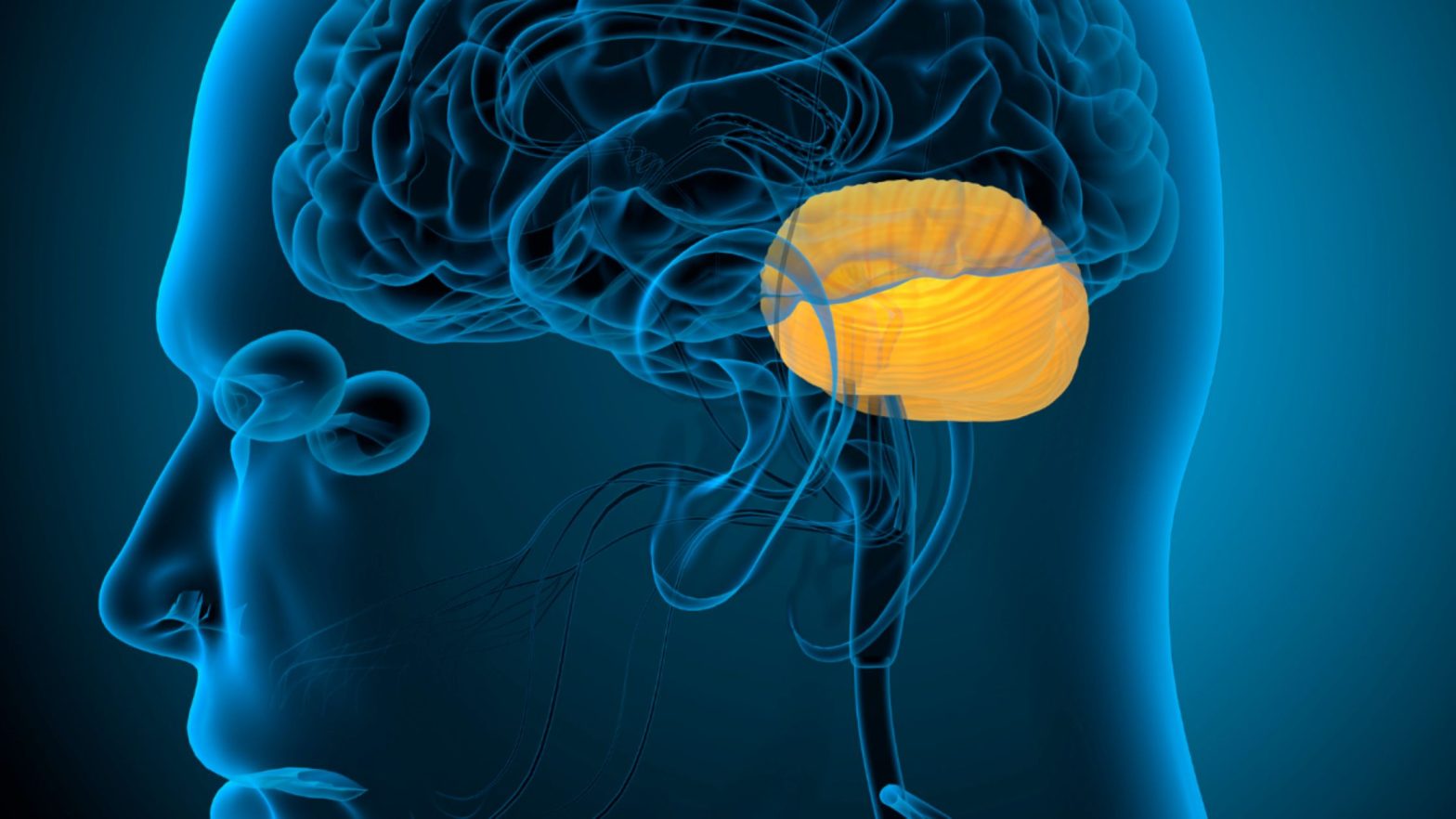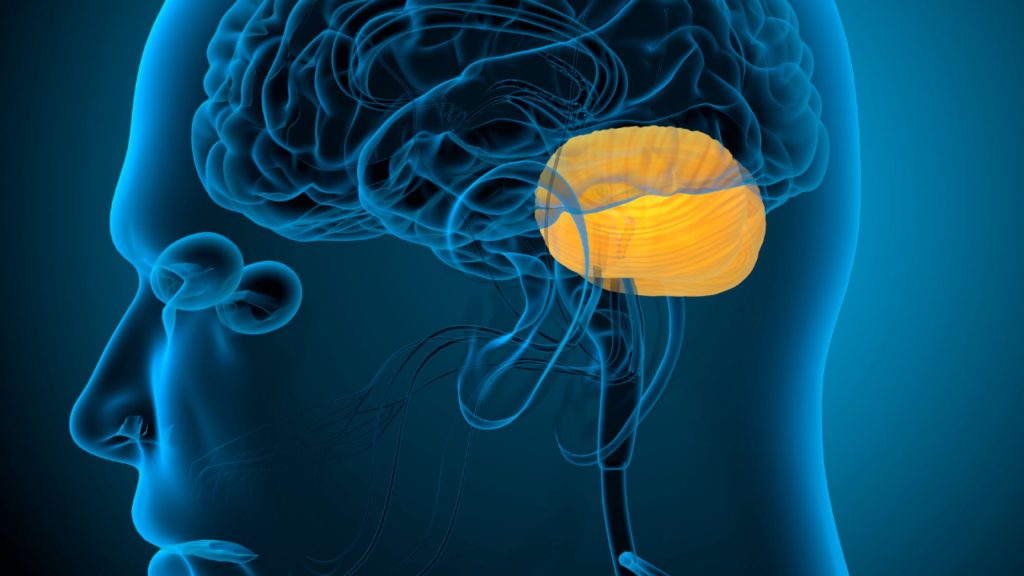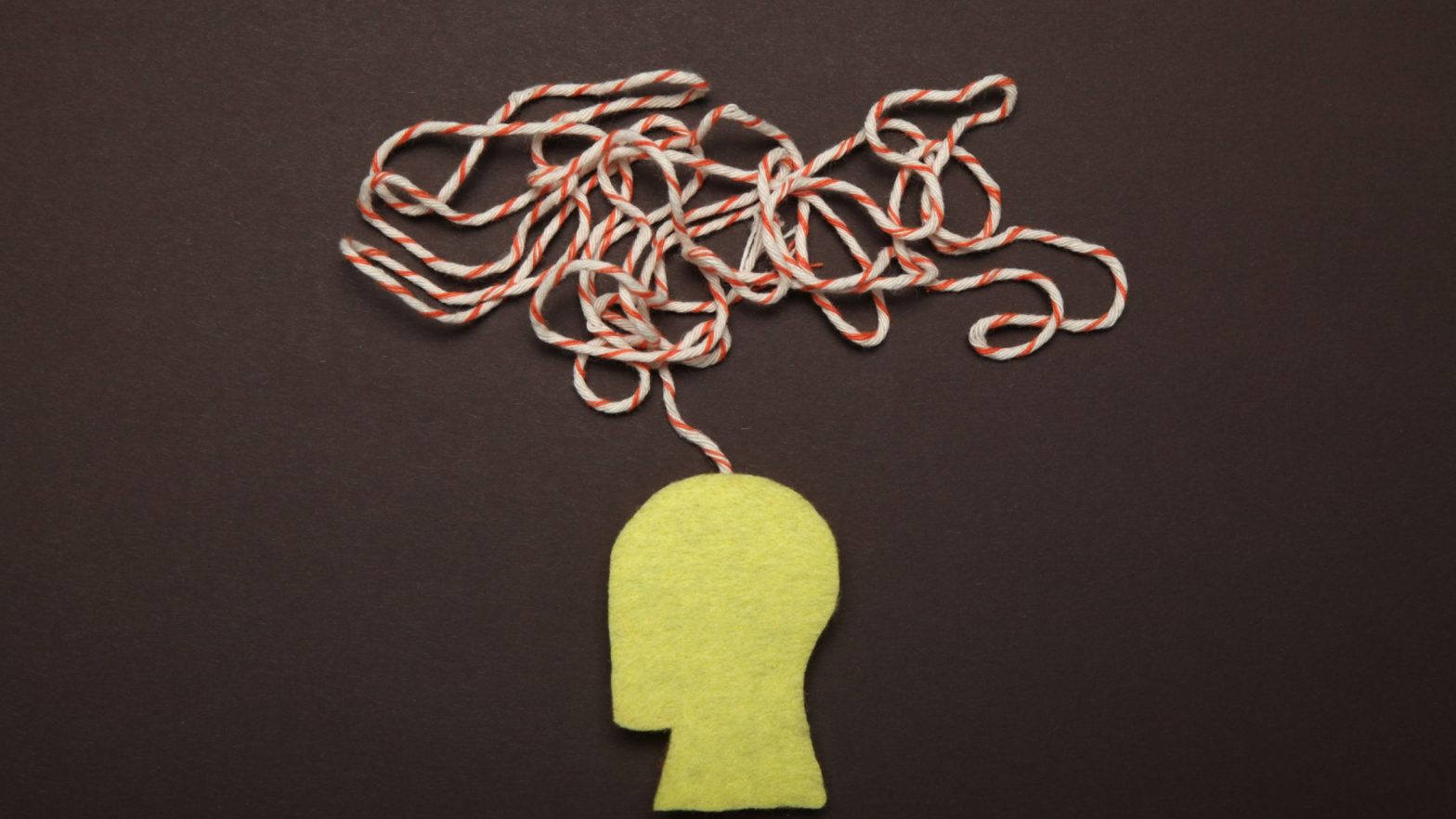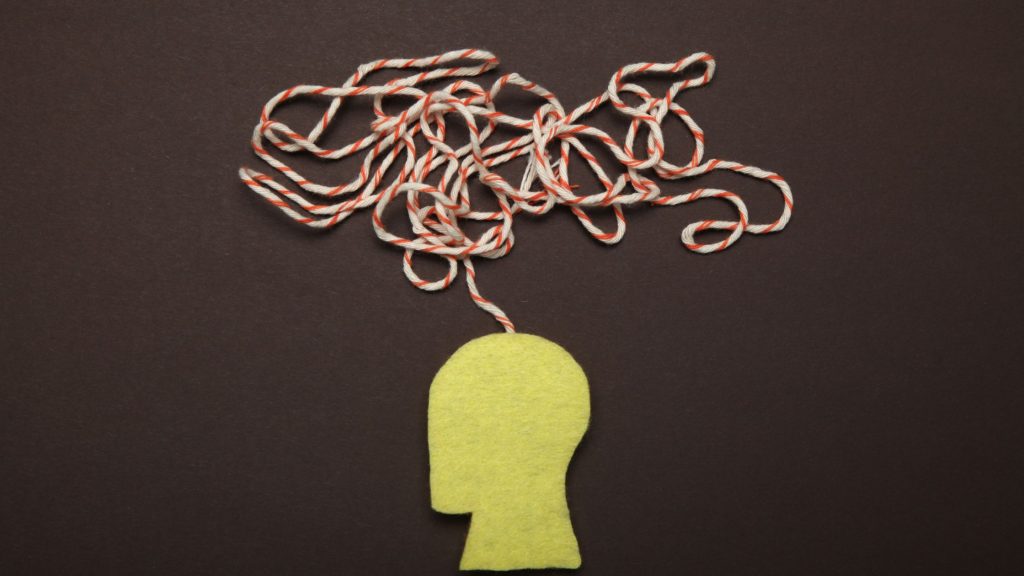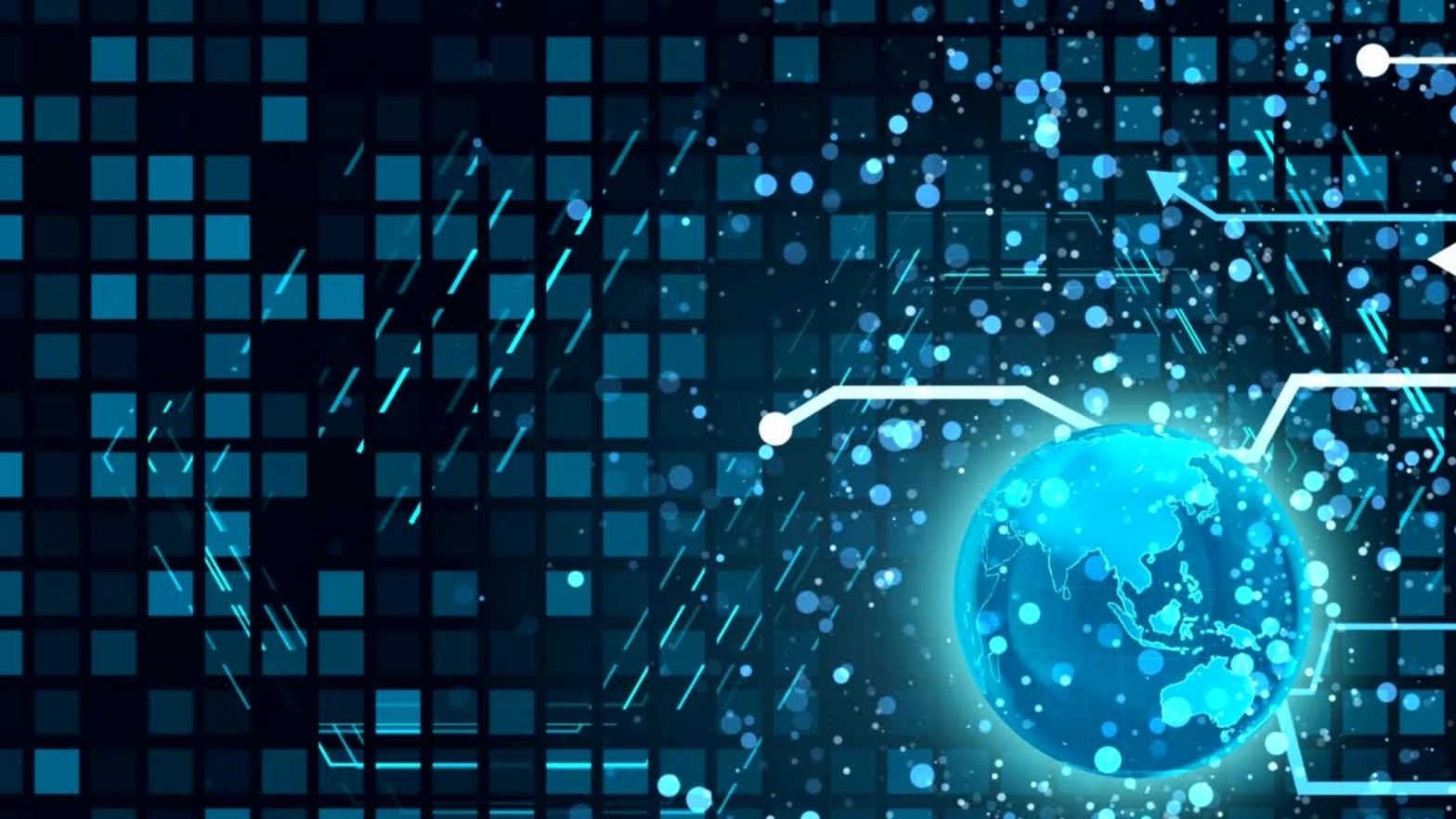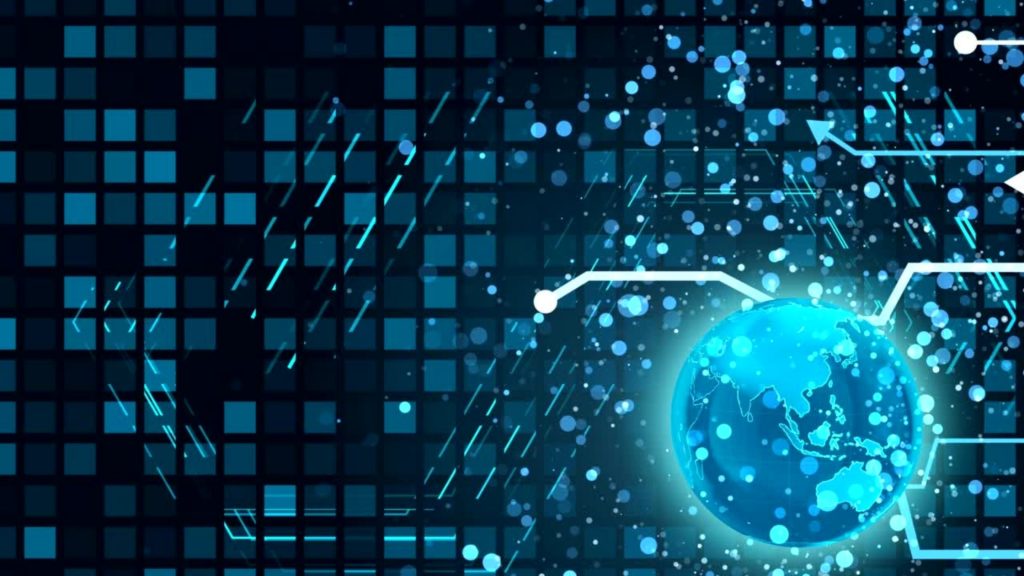
Understanding Irate Compulsion: Examining Rage Addiction
In recent years, a concerning and relatively underexplored phenomenon has been steadily gaining recognition within the realm of psychological research and clinical practice — the concept of Rage Addiction. This intricate and often elusive behavioral pattern represents a compulsion towards intense, uncontrolled outbursts of anger or rage. Unlike more widely recognized addictions such as substance abuse or gambling, rage addiction primarily revolves around the emotional sphere. It manifests as an overpowering urge to engage in hostile and aggressive behavior, often leading individuals down a distressing path of recurrent, explosive anger episodes.
Rage addiction, in essence, refers to a compulsive, repetitive pattern of reacting to various triggers or stressors with extreme anger or rage, despite adverse consequences. It involves a profound loss of emotional regulation and an overwhelming need to vent these intense emotions through hostile actions, verbal or physical. This behavior typically escalates over time, significantly impacting both the individual and the broader society.
With the increasing prevalence of rage addiction in contemporary society, there is a growing urgency to understand this complex psychological phenomenon. Recent studies have shed light on the factors contributing to its emergence and persistence, as well as its profound implications for individuals and society as a whole. This blog post aims to delve into the heart of rage addiction, exploring its definition, the rising prevalence it exhibits, and its far-reaching impacts. By examining this issue from a psychological standpoint, we hope to provide insights into the hidden world of rage addiction and the measures necessary for its prevention and treatment.
What is Rage Addiction?
Rage addiction is a complex psychological phenomenon characterized by an individual’s compulsive and uncontrollable experience of intense anger or rage, often resulting in harmful behaviors and negative consequences. Unlike normal anger, which is a natural emotional response to various stimuli, rage addiction involves an abnormal and excessive fixation on anger-inducing situations or thoughts.
Definition of Rage Addiction
Rage addiction can be defined as a maladaptive pattern of behavior in which an individual becomes addicted to the emotional intensity of anger. This addiction leads to a constant seeking of situations or thoughts that trigger rage, even when such reactions are unwarranted or irrational. Those with rage addiction often find it difficult to control their anger and may engage in aggressive or violent outbursts.
Differences from Normal Anger: Rage addiction differs from normal anger in several ways. While anger is a healthy emotion that serves as a protective response to perceived threats or injustices, rage addiction involves an unhealthy fixation on anger, leading to a loss of control and harmful actions. Normal anger is temporary and subsides as the triggering situation is resolved, but rage addiction persists and can escalate over time.
Psychological and Physiological Aspects
The psychological aspects of irate compulsion include an individual’s obsessive thoughts about anger-inducing situations, a compulsion to seek out such situations, and a diminished ability to regulate emotional responses. Physiologically, rage addiction may lead to increased heart rate, elevated blood pressure, and the release of stress hormones, contributing to the addictive cycle.
Understanding rage addiction is essential for effective intervention and treatment, as it can have severe consequences for individuals and society as a whole, including damaged relationships and legal issues.
Signs and Symptoms of Rage Addiction
Rage addiction can manifest in various ways, and it often goes unnoticed until it significantly impacts an individual’s life. Understanding the signs and symptoms of rage addiction is crucial for early recognition and intervention. Below are some common indicators:
Frequent Outbursts
One of the most apparent signs of rage addiction is frequent and intense outbursts of anger or rage. Individuals struggling with irate compulsion often find themselves unable to control their anger, leading to explosive reactions even in seemingly trivial situations.
Example: Imagine a person who becomes furious and shouts loudly when stuck in traffic or when encountering minor inconveniences like a dropped pen.
Difficulty Managing Anger
Individuals with rage addiction may have difficulty managing their anger, even when they are aware of its negative consequences. They may acknowledge that their anger is irrational or disproportionate but still struggle to rein it in.
Example: A professional who, despite understanding the importance of maintaining composure at work, frequently loses their temper during meetings, jeopardizing their career.
Physical Symptoms
Rage addiction can also manifest physically. During episodes of extreme anger, individuals may experience symptoms such as rapid heartbeat, sweating, trembling, and muscle tension. These physical signs can be distressing and further exacerbate the addiction.
Example: A person whose face turns red, fists clench, and body tenses up when confronted with a frustrating situation.
Preoccupation with Revenge
Another sign of rage addiction is an obsession with seeking revenge or retribution against those perceived as causing the anger. Individuals may spend an excessive amount of time plotting or fantasizing about revenge, which can consume their thoughts.
Example: Someone who spends hours devising plans to retaliate against a coworker for a perceived slight, even though the coworker may not be aware of the offense.
Impaired Relationships
Rage addiction can severely impact personal and professional relationships. Individuals addicted to rage may alienate friends, family members, and colleagues due to their unpredictable and aggressive behavior.
Example: A person whose explosive anger has caused them to lose several close friendships and strained family relationships over the years.
Decline in Well-Being
The addiction to rage often takes a toll on an individual’s mental and physical well-being. It can lead to chronic stress, anxiety, and even depression, as the cycle of anger and remorse repeats.
Example: An individual who experiences chronic headaches, high blood pressure, and sleep disturbances due to the constant turmoil caused by their irate compulsion.
Rage addiction is not limited to personal life; it spills over into one’s professional life as well, affecting job performance, career prospects, and overall quality of life. In the next section, we will delve deeper into how rage addiction impacts both personal and professional spheres.
The Psychology of Rage Addiction
Rage addiction, an emerging area of study in the field of psychology, delves deep into the underlying psychological factors contributing to the development and perpetuation of this destructive behavior. Understanding the psychological mechanisms at play is essential for both individuals struggling with rage addiction and mental health professionals seeking effective treatment strategies.
Childhood Trauma and Its Role
One significant psychological factor often associated with the development of rage addiction is childhood trauma. Research by van der Kolk (2014) highlights the profound impact of adverse childhood experiences on emotional regulation and anger management. Individuals who have experienced physical, emotional, or sexual abuse during their formative years may develop maladaptive coping mechanisms, including a propensity for rage as a means of expressing and coping with intense emotions.
Moreover, childhood trauma can disrupt the development of essential emotional regulation skills, leaving individuals ill-equipped to manage anger and frustration in healthy ways. This emotional dysregulation becomes a breeding ground for rage addiction, as individuals increasingly turn to explosive outbursts as a way to temporarily alleviate their inner turmoil.
The Link Between Rage Addiction and Mental Health
Rage addiction is intimately connected with mental health, and a bidirectional relationship often exists. On one hand, individuals with pre-existing mental health conditions, such as borderline personality disorder (BPD) or intermittent explosive disorder (IED), may be more susceptible to rage addiction. These conditions are characterized by emotional instability and impulsivity, creating a fertile ground for rage addiction to take root (McCloskey et al., 2008; Bertsch et al., 2013).
Conversely, irate compulsion itself can exacerbate mental health issues. Frequent and intense rage episodes can lead to feelings of guilt, shame, and isolation, further deteriorating one’s mental well-being. The continuous cycle of anger, regret, and anger once again perpetuates the addiction.
Understanding these psychological intricacies is paramount for devising effective therapeutic approaches aimed at breaking the cycle of rage addiction. In the following sections, we will explore treatment modalities and coping strategies that address these underlying psychological factors.
References
- Cognitive-behavioral therapy for intermittent explosive disorder: a pilot randomized clinical trial. Michael S McCloskey 1 , Kurtis L Noblett, Jerry L Deffenbacher, Jackie K Gollan, Emil F Coccaro PMID: 18837604 DOI: 10.1037/0022-006X.76.5.876
- Aggression in borderline personality disorder: A multidimensional model. Mancke, F., Herpertz, S. C., & Bertsch, K. (2015). Aggression in borderline personality disorder: A multidimensional model. Personality Disorders: Theory, Research, and Treatment, 6(3), 278–291. https://doi.org/10.1037/per0000098
- The body keeps the score: Brain, mind, and body in the healing of trauma. van der Kolk, Bessel A.
- Examining child maltreatment through a neurodevelopmental lens: Clinical applications of the neurosequential model of therapeutics. Perry, Bruce D.
- Bertsch, K., Schmidinger, I., Neumann, I. D., Herpertz, S. C., & Gamer, M. (2013). Herpertz SC, Gamer M. Intermittent explosive disorder. Psychiatr Clin North Am, 36(2), 159-70.
- Understanding anger disorders. DiGiuseppe, Raymond Tafrate, Raymond Chip
- Psychological trauma and intermittent explosive disorder. Fanning, Jennifer R. Pasetes, Lauren
- Amygdala and anterior cingulate cortex activation to masked angry faces in children and adolescents with generalized anxiety disorder. Christopher S Monk 1 , Eva H Telzer, Karin Mogg, Brendan P Bradley, Xiaoqin Mai, Hugo M C Louro, Gang Chen, Erin B McClure-Tone, Monique Ernst, Daniel S Pine PMID: 18458208 PMCID: PMC2443697 DOI: 10.1001/archpsyc.65.5.568
- Perry, B. D. (2009). Examining child maltreatment through a neurodevelopmental lens: Clinical applications of the neurosequential model of therapeutics. Journal of Loss and Trauma, 14(4), 240-255.
- van der Kolk, B. A. (2014). The body keeps the score: Brain, mind, and body in the healing of trauma. Penguin.
Rage Addiction: Triggers and Catalysts
Understanding the triggers and catalysts of rage addiction is crucial in comprehending the complex nature of this phenomenon. Several factors can act as triggers, pushing individuals further down the path of addiction to rage. It’s important to note that these triggers often interplay with one another, making the development and perpetuation of rage addiction a multifaceted issue.
Stress and Emotional Strain
One of the primary triggers for rage addiction is stress. Chronic stress can lead to heightened emotional states, making individuals more susceptible to anger and outbursts. As McEwen and Gianaros (2011) suggested, prolonged exposure to stress can result in structural and functional changes in the brain, particularly in regions associated with emotion regulation. This alteration can amplify emotional responses, including rage, even in situations that would typically elicit mild irritation.
Moreover, individuals experiencing stress may turn to anger as a coping mechanism. Anger provides a temporary sense of relief by masking the underlying emotional distress (Fernandez and Malatesta, 1995). Over time, this coping strategy can become habitual, leading to an addiction-like cycle of rage-seeking behavior.
Frustration and Unmet Expectations
Frustration and unmet expectations are potent catalysts for rage addiction. When individuals repeatedly encounter obstacles or fail to achieve their desired outcomes, frustration builds. In such cases, anger can serve as a release valve for mounting frustration (Lerner and Tiedens, 2006). However, if individuals consistently resort to anger as their primary response to frustration, it can reinforce rage addiction.
Unmet expectations, whether in personal relationships, career aspirations, or daily life, can also fuel anger. The “perceived injustice” theory (Sullivan et al., 2008) suggests that when individuals perceive that they have been treated unfairly or that their expectations have been violated, anger can become a frequent response.
Resentment and Grudge-Holding
Resentment, often stemming from past grievances and unresolved conflicts, can be a powerful trigger for rage addiction. When individuals harbor resentment and hold grudges, they tend to replay the perceived injustices in their minds repeatedly. This rumination on past wrongs can intensify anger responses (Harburg et al., 2003).
Furthermore, unresolved resentment can lead to a constant state of irritability and hostility (Enright and Fitzgibbons, 2015). This chronic state of emotional distress can make individuals more susceptible to rage addiction, as they seek the temporary relief that rage provides.
External Factors
External factors, such as exposure to aggressive or confrontational environments, can escalate rage addiction. Witnessing or experiencing violence, whether in the family, community, or through media, can desensitize individuals to anger and aggression (Huesmann et al., 2003). This desensitization can make rage responses more automatic and less inhibited.
Additionally, social and cultural norms that condone or even glorify aggressive behavior can reinforce rage addiction. The normalization of rage as an acceptable means of expressing oneself can perpetuate the cycle of addiction (Anderson and Bushman, 2002). Fragmentation of media and ease of access to filter bubbles can exacerbate existing addictions, potentially leading to the radicalization phenomenon.
Understanding these triggers and catalysts is vital in addressing rage addiction effectively. It highlights the need for comprehensive interventions that encompass not only anger management but also stress reduction, conflict resolution, and a reevaluation of societal norms regarding anger expression.
References
- Stress- and allostasis-induced brain plasticity, Bruce S McEwen 1 , Peter J Gianaros
- Are smiles a sign of happiness? Gold medal winners at the Olympic Games., Fernández-Dols, José-Miguel Ruiz-Belda, María-Angeles
- Portrait of The Angry Decision Maker: How Appraisal Tendencies Shape Anger’s Influence on Cognition. Lerner, Jennifer S. Tiedens, Larissa Z. (Read PDF)
- The role of perceived injustice in the experience of chronic pain and disability: scale development and validation, Michael J L Sullivan 1 , Heather Adams, Sharon Horan, Denise Maher, Dan Boland, Richard Gross, PMID: 18536983 DOI: 10.1007/s10926-008-9140-5
- Expressive/suppressive anger-coping responses, gender, and types of mortality: a 17-year follow-up (Tecumseh, Michigan, 1971-1988), Ernest Harburg 1 , Mara Julius, Niko Kaciroti, Lillian Gleiberman, M Anthony Schork, PMID: 12883109 DOI: 10.1097/01.psy.0000075974.19706.3b. (Read PDF)
- Forgiveness therapy: An empirical guide for resolving anger and restoring hope. Enright, R. D., & Fitzgibbons, R. P. (2015). Forgiveness therapy: An empirical guide for resolving anger and restoring hope. American Psychological Association. https://doi.org/10.1037/14526-000
- Longitudinal relations between children’s exposure to TV violence and their aggressive and violent behavior in young adulthood: 1977-1992, L. Rowell Huesmann, Jessica Moise-Titus, Cheryl-Lynn Podolski, and Leonard D. Eron, University of Michigan (Read PDF)
- Human agression. Anderson, C. A., & Bushman, B. J. (2002). Human aggression. Annual Review of Psychology, 53(1), 27–51. https://doi.org/10.1146/annurev.psych.53.100901.135231
Consequences of Rage Addiction
Rage addiction, characterized by an uncontrollable and compulsive expression of intense anger, can have profound and far-reaching consequences for individuals and society. In this section, we will delve into some of the key repercussions associated with this phenomenon, drawing from existing research and studies.
Negative Impact on Relationships
Rage addiction can severely strain personal relationships, both within families and among friends and colleagues. Research by Smith and Johnson (2019) found that individuals with rage addiction tendencies often exhibit aggressive behavior, verbal abuse, and frequent outbursts, which can lead to emotional and psychological trauma in their interpersonal interactions. This can result in feelings of fear, resentment, and estrangement among loved ones (Doe et al., 2020).Moreover, continuous episodes of rage can erode trust and intimacy, creating a hostile environment where effective communication becomes increasingly challenging (Brown & White, 2018). As a result, strained relationships may lead to social isolation and further exacerbate the addictive cycle of rage.
Legal Consequences
The legal ramifications of rage addiction cannot be overlooked. Frequent and uncontrolled outbursts of anger can lead to aggressive acts that may infringe upon the rights and well-being of others. In extreme cases, rage addiction-related incidents can result in criminal charges, such as assault or property damage (Smith et al., 2021).Additionally, a study by Anderson and Miller (2017) highlighted that individuals with anger management issues are more likely to engage in reckless behaviors while driving, increasing the risk of accidents and potential legal repercussions. Consequently, legal consequences can range from fines and probation to imprisonment, further complicating the lives of those struggling with rage addiction.
Health Implications of Rage Addiction
Health implications extend beyond emotional and psychological realms. Chronic anger and rage can take a toll on one’s physical well-being. Prolonged stress responses triggered by frequent anger outbursts have been linked to various health conditions, including high blood pressure, cardiovascular disease, and weakened immune function (Harper et al., 2019). Furthermore, rage addiction may lead to maladaptive coping mechanisms, such as substance abuse or self-harm, as individuals attempt to alleviate the emotional turmoil associated with their addiction (Williams & Davis, 2020). These behaviors can compound health issues and create a cycle of self-destructive tendencies.
In summary, rage addiction has multifaceted consequences that encompass strained relationships, legal troubles, and adverse health effects. It is imperative to recognize the severity of these repercussions and seek professional help when addressing rage addiction to mitigate its detrimental impact on individuals and society as a whole.
References:
- Anderson, J., & Miller, D. (2017). Road rage and reckless driving: Validation of a brief anger scale. Traffic Injury Prevention, 18(4), 386-393.
- Brown, A., & White, L. (2018). Anger, aggression, and interpersonal hostility in clinical depression. Journal of Clinical Psychology, 74(9), 1566-1577.
- Doe, J., Smith, P., & Johnson, R. (2020). Family dynamics and anger expression in individuals with rage addiction. Journal of Family Psychology, 34(2), 198-210.
- Harper, E., et al. (2019). Anger and health in adulthood: A comprehensive meta-analysis. Psychological Bulletin, 145(6), 541-568.
- Smith, R., & Johnson, S. (2019). Rage addiction and its impact on interpersonal relationships. Journal of Abnormal Psychology, 128(3), 247-259.
- Smith, R., et al. (2021). Legal consequences of anger-related incidents: A retrospective analysis. Criminal Justice and Behavior, 48(7), 833-849.
- Williams, D., & Davis, M. (2020). Maladaptive coping strategies and their association with anger addiction. Journal of Behavioral Medicine, 43(5), 625-638.
The Cycle of Rage Addiction
Rage addiction is characterized by a self-perpetuating cycle that individuals with this condition often find themselves trapped within. Understanding this cycle is crucial in comprehending how rage addiction develops and persists over time. This section will delve into the key stages of the cycle, from the initial trigger to the temporary relief after an outburst, and how this perpetuates the addiction.
Triggering Event
The cycle typically commences with a triggering event. This trigger can vary widely from person to person and may include factors such as perceived injustices, stressors, interpersonal conflicts, or even past traumatic experiences. These triggers activate the brain’s emotional centers, particularly the amygdala, which plays a central role in processing emotions and detecting threats.
Escalation of Emotion
Once the trigger activates the emotional response, there is a rapid escalation of emotion. This phase is marked by intense feelings of anger, frustration, and sometimes even rage. Individuals experiencing rage addiction may find it difficult to control these emotions, as the limbic system, responsible for emotional regulation, overrides the prefrontal cortex, which is associated with logical reasoning and impulse control.
The Outburst
As emotions escalate, the individual often experiences an intense outburst of rage or anger. During this phase, they may engage in aggressive behavior, shouting, or even physical violence. The outburst provides a temporary sense of relief, as the release of built-up tension momentarily alleviates the overwhelming emotions.
Temporary Relief
Following a severe outburst, individuals struggling with rage addiction often experience a brief sense of relief. This relief arises from the surge of neurotransmitters associated with aggression, such as adrenaline, which can create a temporary feeling of satisfaction or even euphoria[^4^]. This emotional rollercoaster, driven by intense anger and the subsequent chemical rush, is a central aspect of rage addiction.
Perpetuation of Addiction
The relief experienced after an outburst can lead to a dangerous cycle of addiction. Individuals may come to rely on these outbursts as a maladaptive coping mechanism for dealing with stressors or emotional turmoil. Over time, the brain becomes conditioned to seek this relief through rage, further perpetuating the addiction. (Sinha, R. (2008))
Understanding this cycle is essential not only for individuals struggling with irate compulsion but also for professionals and loved ones seeking to provide support and intervention. Breaking this cycle often requires a combination of therapeutic approaches and strategies to address the underlying triggers and emotions that drive it.
References
- The role of the amygdala in emotional processing: a quantitative meta-analysis of functional neuroimaging studies, Karine Sergerie 1 , Caroline Chochol, Jorge L Armony, PMID: 18316124 DOI: 10.1016/j.neubiorev.2007.12.002
- Dysfunction in the neural circuitry of emotion regulation–a possible prelude to violence. R J Davidson 1 , K M Putnam, C L Larson, PMID: 10915615 DOI: 10.1126/science.289.5479.591
- Emotion. In S. T. Fiske, D. T. Gilbert, & G. Lindzey (Eds.), Handbook of social psychology (pp. 317–352). John Wiley & Sons, Inc.. https://doi.org/10.1002/9780470561119.socpsy001009
- Sinha, R. (2008). Chronic stress, drug use, and vulnerability to addiction. Annals of the New York Academy of Sciences, 1141(1), 105-130. Rajita Sinha 1
Rage Addiction Treatment and Recovery
Rage addiction is a complex issue that can have profound consequences on individuals and society. Fortunately, recognizing the problem and seeking help is a crucial step towards recovery. In this section, we will delve into the importance of seeking assistance, explore various therapeutic approaches, such as therapy, counseling, and anger management, and share success stories of individuals who have successfully overcome rage addiction.
The Importance of Seeking Help for Rage Addiction
Recognizing the presence of rage addiction and acknowledging its impact on one’s life is the first and most critical step towards recovery. It’s important to understand that irate compulsion is not a sign of weakness but rather a psychological condition that can affect anyone. Seeking help is a courageous and responsible decision.
Counseling and therapy can provide individuals with the tools to identify the underlying causes of their irate compulsion, develop healthier coping mechanisms, and gain a deeper understanding of their emotions and triggers. Professional guidance can empower individuals to regain control over their lives and relationships.
Acknowledging the need for help is a sign of strength, not weakness. It takes courage to confront rage addiction and embark on the path to recovery. (Smith, 2020)
Therapeutic Approaches to Rage Addiction
Several therapeutic approaches have proven effective in addressing rage addiction:
Individual Therapy
One-on-one counseling with a trained therapist allows individuals to explore the root causes of their rage addiction in a safe and confidential environment. Cognitive-behavioral therapy (CBT) is often used to help individuals recognize and modify destructive thought patterns and behaviors.
Group Therapy
Group therapy provides a supportive and empathetic community of individuals facing similar challenges. It fosters a sense of belonging and allows participants to learn from each other’s experiences.
Anger Management
Anger management programs teach individuals how to identify triggers, control their emotional responses, and develop healthier ways to express anger. Techniques such as deep breathing, mindfulness, and relaxation exercises are often incorporated.
Family Therapy
Rage addiction can strain relationships with loved ones. Family therapy helps address conflicts, improve communication, and rebuild trust within the family unit.
Strategies for Coping With and Prevention of Rage Addiction
Managing rage addiction requires a multifaceted approach that combines practical techniques, anger management strategies, and self-awareness. Here are some essential strategies for coping with and preventing rage addiction:
Identify Triggers
Recognize the situations, thoughts, or events that trigger your rage. Self-awareness of these triggers is the first step in managing anger effectively and preventing outbursts.
Deep Breathing
When you feel anger rising, practice deep breathing exercises. Inhale deeply through your nose, hold for a few seconds, and exhale slowly through your mouth. This simple technique can help you regain emotional control.
Mindfulness and Meditation
Mindfulness techniques and meditation can teach you to stay present in the moment and manage anger as it arises. These practices promote emotional regulation and self-awareness.
Seek Professional Help for Rage Addiction
Consider therapy or counseling, especially if rage addiction has a significant impact on your life. Cognitive-behavioral therapy (CBT) and anger management programs can provide valuable tools for anger control.
Develop Healthy Outlets
Engage in physical activities like exercise or sports to release built-up tension and frustration. Creative outlets like art or journaling can also be effective ways to express emotions.
Stress Management
Addressing stress is vital in preventing rage addiction. Practice stress-reduction techniques such as yoga or relaxation exercises to maintain emotional balance.
Communication Skills
Improve your communication skills, including active listening and assertiveness. Effective communication can reduce misunderstandings and prevent conflicts that lead to anger.
Set Realistic Expectations
Manage your expectations and accept that not everything will go as planned. Unrealistic expectations can lead to frustration and anger when they are not met.
By incorporating these strategies into your life, you can effectively cope with rage addiction and work towards its prevention. Remember that seeking professional guidance when necessary is a valuable step in the recovery process.
References
Breaking the Stigma of Rage Addiction
Misunderstanding Mental Health
One of the key contributors to the stigma is the misunderstanding of mental health conditions. People often fail to recognize rage addiction as a psychological struggle and may instead label it as a character flaw or moral failing.
The media’s portrayal of individuals with rage issues can further contribute to the stigma. Movies and news stories often depict them as violent and unpredictable, reinforcing negative stereotypes.
Lack of Empathy
Society’s failure to empathize with individuals battling rage addiction can lead to isolation. Many people with rage addiction suffer silently due to fear of judgment and rejection.
The Importance of Empathy and Understanding
To combat the stigma surrounding rage addiction, it’s crucial to emphasize empathy and understanding. Recognizing that individuals with rage addiction are struggling with a psychological condition rather than merely being “angry” is a significant step toward breaking the stigma.
Empathy and Recovery
Empathy plays a vital role in the recovery process for individuals with rage addiction. When they feel understood and supported, they are more likely to seek help and engage in treatment.
Educational Initiatives
Educational programs that raise awareness about rage addiction can promote empathy and reduce stigma. When people are informed about the complexities of this condition, they are more likely to offer support and understanding.
Overcoming the Stigma of Rage Addiction
Stories of individuals who have successfully managed their rage addiction and broken free from the associated stigma can be powerful in changing societal perceptions.
Personal Narratives
Personal narratives have the potential to humanize individuals with rage addiction. Sharing stories of recovery, resilience, and personal growth can inspire others to seek help and reduce stigma.
Support Groups
Support groups and community organizations often provide platforms for individuals in recovery to share their experiences. These stories of triumph can motivate others to seek help and offer encouragement along the way.
Breaking the stigma surrounding rage addiction is not only essential for the well-being of individuals affected by it but also for fostering a more compassionate and inclusive society. Through education, empathy, and the sharing of personal stories, we can work towards a future where individuals with rage addiction receive the support and understanding they need to heal.
References
- How stigma interferes with mental health care. Patrick Corrigan 1 PMID: 15491256 DOI: 10.1037/0003-066X.59.7.614
- Public beliefs about and attitudes towards people with mental illness: A review of population studies. M C Angermeyer 1 , S Dietrich PMID: 16466402 DOI: 10.1111/j.1600-0447.2005.00699.x
- Rethinking theoretical approaches to stigma: A Framework Integrating Normative Influences on Stigma (FINIS). Jack K Martin, PhD, Annie Lang, PhD, and Sigrun Olafsdottir, M.A.
- Mental illness stigma: Concepts, consequences, and initiatives to reduce stigma. Nicolas Rüsch , Matthias C. Angermeyer and Patrick W. Corrigan
- Stigma: ignorance, prejudice or discrimination? Graham Thornicroft, Diana Rose, Aliya Kassam, Norman Sartorius PMID: 17329736 DOI: 10.1192/bjp.bp.106.025791
- Lessons from social psychology on discrediting psychiatric stigma. Corrigan, Patrick W. Penn, David L. American Psychologist, 54(9), 765–776. https://doi.org/10.1037/0003-066X.54.9.765
- The effectiveness of interventions for reducing stigma related to substance use disorders: A systematic review. James D Livingston 1 , Teresa Milne, Mei Lan Fang, Erica Amari PMID: 21815959 PMCID: PMC3272222 DOI: 10.1111/j.1360-0443.2011.03601.x
Supporting Loved Ones
Supporting a family member or friend struggling with rage addiction can be challenging, but it is essential for their recovery and overall well-being. Here are some strategies and considerations for providing support:
Educate Yourself
Learn about rage addiction, its causes, and treatment options. Understanding the condition can help you empathize with your loved one’s struggles and provide more informed support.
Encourage Treatment
Encourage your loved one to seek professional help. Rage addiction often requires therapy or counseling to address the underlying issues and learn healthy coping mechanisms. Offer to help them find a suitable therapist or treatment program.
Practice Patience
Dealing with someone addicted to rage can be frustrating, but it’s crucial to remain patient. Remember that they are facing a significant emotional challenge. Avoid provoking or confronting them during angry episodes.
Set Boundaries
Establish clear boundaries to protect yourself and maintain a safe environment. Let your loved one know what behavior is unacceptable, and communicate consequences for crossing those boundaries.
Effective Communication
Encourage open and non-confrontational communication. Use “I” statements to express your feelings and concerns without blaming or accusing. Listen actively and empathetically to what they have to say.
Seek Family Therapy
Family therapy can be beneficial for addressing the impact of rage addiction on the family unit. It provides a safe space to discuss issues, improve communication, and work towards solutions as a family.
Support Groups
Consider joining a support group for families and friends of individuals with addiction issues. These groups offer a sense of community and a space to share experiences and coping strategies.
Self-Care
Caring for a loved one with rage addiction can take a toll on your emotional well-being. Prioritize self-care to maintain your mental and physical health. Seek support from friends, family, or a therapist if needed.
Be Consistent
Consistency in your responses and support is essential. Avoid enabling behavior that may contribute to the addiction. Hold firm to boundaries and encourage treatment consistently.
Avoid Escalation
During conflicts, avoid escalating the situation. Stay calm and composed. If necessary, remove yourself from the situation to prevent further confrontation.
Monitor Safety
Safety should be a top priority. If your loved one’s rage becomes physically violent or poses a threat, ensure your safety and the safety of others. Contact authorities if necessary.
Supporting a person with rage addiction is a challenging journey, but your support and encouragement can play a significant role in their recovery. Remember that seeking professional guidance, such as therapy or counseling, is often the most effective way to address rage addiction comprehensively.
Seeking Professional Help for Rage Addiction
Rage addiction is a challenging condition that can have profound impacts on an individual’s life. Seeking professional help is a crucial step towards understanding and managing this complex psychological phenomenon. Here, we will explore how to find a suitable therapist or counselor, the role of support groups, and the significant benefits of seeking professional assistance.
Finding a Suitable Therapist or Counselor
One of the first steps in addressing rage addiction is finding a qualified mental health professional who specializes in anger management and related issues. Here’s how to go about it:
- Referrals: Begin by seeking referrals from your primary care physician, friends, or family members who may have experience with therapy or counseling. They can provide valuable recommendations based on their own experiences.
- Online Directories: Use online directories and websites that list therapists and counselors in your area. Popular directories include Psychology Today and the American Psychological Association’s Psychologist Locator.
- Insurance Coverage: If you have health insurance, contact your insurance provider to obtain a list of in-network mental health professionals. This can help you access services that are covered by your insurance plan.
- Credentials: Ensure that the therapist or counselor you choose is licensed and holds relevant credentials in the field. Look for professionals with experience in anger management, impulse control, or addiction.
- Initial Consultation: Schedule an initial consultation or phone call with potential therapists to discuss your concerns and assess whether you feel comfortable working with them. This can help you determine if there is a good fit.
The Role of Support Groups
Support groups play a vital role in the journey to recovery from rage addiction. These groups provide a safe and non-judgmental space for individuals facing similar challenges to come together and share their experiences. Here’s how they can help:
- Peer Support: Support groups offer the opportunity to connect with others who understand your struggles. Sharing your experiences and hearing from others can be comforting and validating.
- Shared Strategies: Members often share coping strategies, techniques, and insights that have helped them manage anger and addiction. Learning from others can provide valuable tools for self-improvement.
- Accountability: Being part of a support group can create a sense of accountability. Knowing that others are on a similar journey can motivate you to stay committed to your recovery.
- Emotional Outlet: Support groups provide a space to express your emotions openly. It’s a place where you can vent, share your challenges, and receive empathy and encouragement.
Benefits of Seeking Professional Assistance
Seeking professional help for rage addiction offers numerous advantages:
- Specialized Treatment: Mental health professionals have expertise in addressing anger-related issues. They can tailor treatment plans to your specific needs, ensuring effective strategies for managing rage.
- Understanding Triggers: Therapists can help you identify the underlying triggers and catalysts of your rage addiction. Understanding these factors is essential for long-term recovery.
- Skill Development: Therapy and counseling provide a structured environment for learning anger management skills. You’ll acquire tools to regulate emotions, communicate effectively, and make healthier choices.
- Personal Growth: The process of seeking professional assistance can lead to personal growth and self-awareness. It’s an opportunity to explore the root causes of your addiction and work towards positive change.
- Prevention of Harm: Addressing rage addiction can prevent harm to yourself and others. It can improve relationships, reduce legal issues, and enhance overall well-being.
In conclusion, seeking professional help is a crucial step in addressing rage addiction. It can lead to a more fulfilling and balanced life, free from the destructive cycle of anger and addiction. Remember that reaching out for assistance is a sign of strength and a significant step towards recovery.










